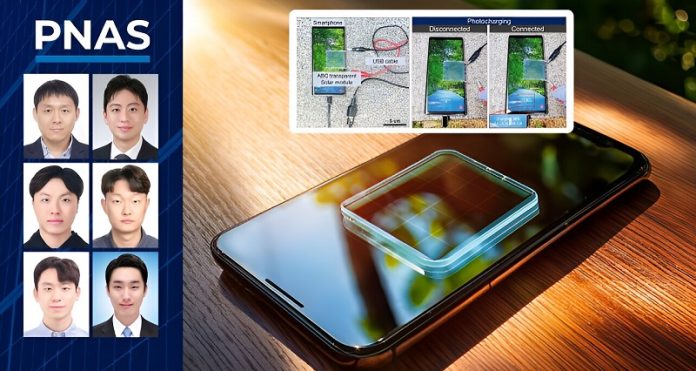
Imagine charging your smartphone directly from its screen or powering buildings and cars through their windows.
This is now possible thanks to new transparent solar cell technology developed by a research team at UNIST, led by Professor Kwanyong Seo.
Their work, recently published in PNAS, introduces a solar cell that can supply energy from glass surfaces, such as windows in buildings and automobiles, while remaining colorless and transparent.
The new solar cells achieve both high efficiency and aesthetic appeal by using an “all-back-contact” design.
In this design, all components of the solar cell are placed on the back, leaving the front surface completely clear, just like glass.
This breakthrough makes the solar cells almost invisible, while still allowing them to capture energy from sunlight.
One of the major challenges with previous transparent solar cells was the need for metal wires, which reduced both efficiency and aesthetics.
However, the research team at UNIST solved this problem with a new technology called Seamless Modularization.
This technique removes the gaps between devices and eliminates the need for visible metal wires, maintaining the sleek, glass-like appearance of the solar cells.
The team developed a 16 cm² transparent solar cell module that achieves high efficiency, ranging from 20% to 14.7% in light transmission, while keeping the same aesthetic appeal as a single device.
Impressively, they also demonstrated that this technology could be used to charge a smartphone using natural sunlight, showing that even the screens of small mobile devices could serve as energy sources.
“This study solved the aesthetic issues with previous transparent solar cells and opens up new possibilities for their use in industries such as small devices, buildings, and car windows,” said researchers Jeonghwan Park and Kangmin Lee.
Professor Seo highlighted that this new design paves the way for further research into making transparent solar cells a commercially viable technology. He believes that these solar cells could become a key player in the future of eco-friendly energy.
This innovation offers a glimpse into a future where windows, smartphone screens, and even car glass can produce clean energy, contributing to a more sustainable world while keeping the beauty and functionality of everyday devices intact.
Source: KSR.



